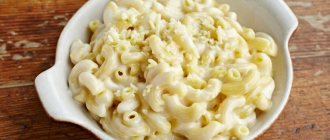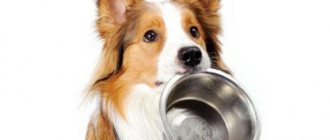Pets love to be pampered with goodies, and owners are always willing to reward their beloved pet. However, when it comes to adding cheese to an animal's diet, it is difficult to know whether it is really necessary or whether it poses a health risk. Dogs are mobile, active creatures, so their body needs food that can provide a sufficient amount of calories. Daily food mainly consists of meat - pork, beef, lamb, liver, bones. The dietary option is chicken. It is important to have vegetables, cereals, bran, wet or dry food in the diet. Experienced breeders also recommend giving their pets low-fat fermented milk products, including cheese.
Benefits and harms
On the one hand, dairy products are important for dogs, since many breeds, especially large ones, have a calcium deficiency in the body. But consuming milk or fermented milk products with high fat content can cause stomach problems.
Cheese contains the optimal amount of phosphorus, calcium and protein and is easily digestible. But at the same time, frequent use can lead to:
- stomach upsets due to high fat and salt content;
- development of lactose intolerance;
- allergies;
- obesity.
Signs of food allergies in dogs
How do food allergies manifest in dogs? The main symptoms of the disease include:
Photo: dog itching | Dreamstime.com
- Itching, swelling and redness of the affected areas;
- Problem areas of the skin may be hot to the touch and smell unpleasant;
- Presence of scratches and bites on the skin;
- Rash and alopecia (most often on the face and ears, on the stomach, in the armpits, on the limbs, in the anus);
- Flow of mucus from the nose and eyes;
- Cough and heavy breathing;
- Sometimes the symptoms of food allergies in dogs are nausea and gastrointestinal upset, but such signs are more typical of food intolerance.
Which varieties can be given and which cannot?
If the owner decides to pamper his pet with a tasty morsel, he should be more careful in his choice and offer his friend the most useful option.
It is worth paying attention to the composition - it should not contain palm oil or chemical additives. You should also avoid cheese products: they are harmful to animals and people.
You can give:
- Dutch – contains vitamins, magnesium, copper, does not contain lactose;
- Circassian - Adyghe cheese is harmless to dogs and is dietary;
- Tilsit - a high-quality additive to the diet;
- cottage cheese is good for the musculoskeletal system. You need to choose fresh and low-calorie;
- soft, low-fat varieties - mozzarella, ricotta, feta cheese.
Treatment of food allergies
Treatment of food allergies in dogs usually includes the use of the following medications:
- Antihistamines (Desloratadine, Hifenadine, Levocetirizine, etc.);
- Cromons (Cromoglin, Intal, Lecrolin, High-chrome);
- Corticosteroids (Execan, Advantan, Elokom);
- Immunomodulators (Gamavit, Fosprenil, Imunofan).
Although some drugs for treating allergies are listed above, you should not go to a veterinarian without a visit to the veterinarian. Any medications for a dog should only be prescribed by a specialist.
How much cheese can you give your dog?
There is no need to completely exclude treats from the menu and prohibit your pet from enjoying delicacies. It is enough to follow certain rules.
You can give cheese to dogs no more than 1-2 times a week. It can be used as a reward in training, at performances, and as praise for obedience.
The quantity depends on the size of the animal. For example, spitz cheese is ok, but a piece of 50 - 100 g will be large and equal to 3-4 sandwiches. For Chihuahuas, the cheese should be cut into small pieces weighing about 5 g. Large breeds can be pampered with a portion of up to 70 g.
Which cheese to choose for a dog
In order not to harm your pet’s health, you need to carefully choose the type of cheese. Store shelves provide a large selection. Cheeses differ in composition, production method and consistency.
Acceptable types of cheese
List of allowed types of cheese for dogs:
1. Cheddar.
It is one of the most popular cheeses. Hard cheeses tend to have a higher salt content because it is commonly used as a preservative. If you use a small amount of cheese as a teaching aid, this should not cause any problems.
2. Cottage cheese.
This variety is an unripe cheese and therefore contains less lactose after the fermentation process. Cream cheese typically contains less sodium than harder cheeses, so this is a big plus.
3. Swiss cheese.
It has a nutty flavor and is very similar to cheddar. The recognizable holes are formed by gas bubbles during fermentation, discarded by bacteria as the cheese grows. The lactose content in this cheese is quite low and can be consumed with relative safety.
Contraindications
Whether dogs can have cheese or not is up to their owners to decide. But for some pets this product is contraindicated. Namely:
- Miniature breeds – they should not consume large amounts of the product.
- For kids. Giving your puppy cheese is absolutely not worth it - at least until he is a month old. The baby will not be able to digest the treat.
- Pregnant and lactating. Eating such food is also undesirable for dogs bearing offspring. However, capricious young ladies can be allowed a small piece.
- For allergy sufferers.
- With problems with the liver and gastrointestinal tract.
- Suffering from obesity.
- Sedentary.
Old people can occasionally be given a slice of soft, low-fat cheese or cottage cheese.
LiveInternetLiveInternet
Food allergies in dogs are a fairly common phenomenon, not least among all allergies that can occur in animals. The symptoms of food allergies are similar to those of other dog diseases, so it is important to determine that the allergic reaction is caused by the food. Allergies in dogs can be caused by household chemicals (especially those with a strong odor - fabric softeners, air fresheners, furniture polishes), construction and auto chemicals, dust, pollen, external parasites (flea dermatitis). It is also important to distinguish food allergies from food intolerances to individual foods. In the second case, the negative reaction of the dog’s body may be diarrhea and/or vomiting without accompanying manifestations of a typically allergic nature.
Symptoms of food allergies in dogs: - itching of the skin - redness of certain areas of the skin - rashes on the skin (most often localized on the stomach, armpits, face, area around the anus) - discharge from the eyes (sour, watery eyes) - discharge from the nose - swelling — wetting of certain areas of the skin (especially in the area of the armpits and other natural folds of the skin). — unpleasant odor from the dog’s skin and fur — eczema of the outer ear — digestive disorders (diarrhea) are also possible. Causes of food allergies in dogs - allergenic products An allergic reaction in dogs has a pronounced individual character. This means that the same product can be completely harmless for one dog, and be a strong allergen for another. As veterinary practice shows, the following dog breeds are most susceptible to food allergies: Dalmatians, Staffordshire terriers, German shepherds, Shar-Peis, English and French bulldogs. Allergies most often occur in white dogs. The most common causes of food allergies in dogs are: - raw and boiled chicken meat - beef - soy - oatmeal, wheat and semolina (porridges made from these cereals) - egg yolk - fish - dairy and fermented milk products - vitamin and mineral supplements (especially those containing vitamins group B and yeast) - low-quality (cheap) ready-made dog food (both dry and canned, but dry - to a greater extent) - low-quality dog treats (dragées, bones, biscuits containing synthetic preservatives, dyes and flavors) - foods prohibited for dogs. How to determine which product causes a food allergy? The most reliable way to determine which product is allergenic for your dog is to conduct an experiment. A dog with signs of food allergies should be placed on a strict diet that includes only a few foods that do not cause allergic reactions. Usually it is rice and lamb. The dog should not be offered anything else. The difficulty in identifying allergens is that allergies in dogs rarely appear immediately after ingesting the allergen - food allergies have a “cumulative” nature. Those. A dog can eat food that is unsuitable for it for a month, and only then it may have an allergic reaction. The same thing happens when you stop feeding allergens - the reaction is present, although the product is excluded from the diet. Therefore, such a strict limited diet must be followed for at least 3 weeks until the symptoms of allergies disappear or decrease. Then you need to gradually try to introduce some product into the dog’s diet and observe its reaction. For example, you can add buckwheat to rice, and replace lamb with rabbit meat. You only need to administer one product at a time - so that if symptoms return, you will know exactly what exactly the dog had an allergic reaction to. The period of “testing” of the introduced product must be at least two weeks - do not forget that food allergies in dogs are cumulative. The allergen confirmed in this way must be permanently excluded from the dog’s diet. Two to three weeks after introducing a strict diet, you can try offering your dog fermented milk products. This must be done very carefully, and use only high-quality, fresh products, with the least amount of preservatives, without flavorings or other additives. It is better if these are biologically active products - biokefir, bifidum-ryazhenka and the like. They will not only help the digestion process, but also fight intestinal dysbiosis that can occur in a dog during allergies. For the same purpose, lactobifide can be added to dog food. As you can see, identifying allergens and, conversely, products that are safe for dogs can take quite a lot of time and effort. In addition, such a homemade hypoallergenic diet has a depleted composition. A simpler and more effective way is to feed the dog special industrially produced hypoallergenic food. These foods contain the nutrients, vitamins, and fatty acids necessary to maintain a dog’s health. The main components of ready-made hypoallergenic food, both dry and wet, are usually rice and lamb. The best proven hypoallergenic foods are those from manufacturers such as Royal Canin, Hills, and Eukanuba. You can switch to hypoallergenic food immediately, i.e. a gradual transition with replacing part of the daily portion is not required. You simply eliminate the current diet and completely switch the dog to feeding this food. Treatment of food allergies in dogs Treatment of allergies comes down to the lifelong exclusion of allergenic foods from the dog’s diet after they have been identified. You can help your dog survive the manifestations of an allergic reaction by using drugs that promote the absorption and removal of allergens from the body (activated carbon, enterosgel), as well as drugs that activate the drainage functions of the liver and kidneys. The oil-based drug “Tykveol” has proven itself well, not only increasing the protective qualities of the liver, but also containing vitamins and fatty acids that have a positive effect on metabolic processes in the dog’s body. To achieve a pronounced effect, "Tykveol" must be used long-term, for a course lasting at least one month. In acute forms of allergies, you can resort to glucocorticosteroids (dexamethasone, dexafort) and antihistamines (tavegil, suprastin, cetrin, claritin). But this should only be decided by your veterinarian. Self-medication is strictly unacceptable - by extinguishing allergy symptoms, you can cause serious harm to the health of your pet.











